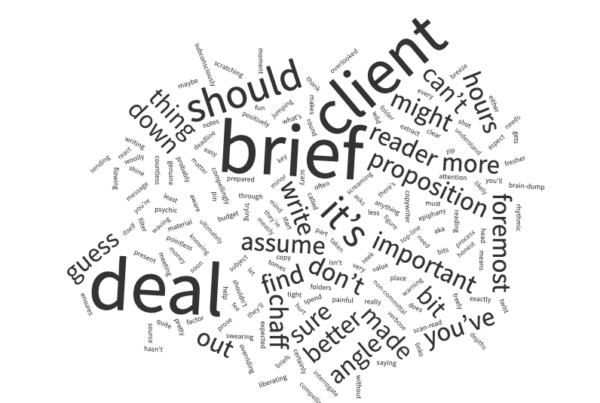One of the key arts of copywriting is condensing often complex or over-busy messages into clear and succinct ones that avoid wasting people’s precious time. Often there’s a lot to say, and not a lot of space (or attention span) to say it – so we ensure fewer words work much harder in getting key messages across.
We put ourselves in the busy and impatient reader’s shoes, and aim for the most engaging and persuasive ways to grab and hold their attention… and then not disappoint them with waffle or overstatement.
We don’t just rattle it off and expect our reader to do the hard work. We do it for them.
But to do that, we need a starting point: the brief.
Everything starts with (and continuously refers back to) the brief. It’s the key to achieving the best results in the most efficient and effective ways. A comprehensive and focused brief helps us ensure your messaging stands out among your competitors, and secures positive reactions (enquiries, sales, advocacy, loyalty, and so on) from your audience.
A good brief helps you say what you mean to say, to the right people, in the right places, and in the most engaging ways. It helps your copywriter maintain focus on the ‘single-minded proposition’ and its supporting messaging – and convey it all coherently, compellingly, and with confidence and authority on your behalf.
In short, it means impactful and persuasive results come far more easily.
It therefore makes sense to spend quality time on that brief. If you can, get your copywriter involved here – they know what they need to know, and can help you collate all the relevant source material and insight well before they start writing. Most copywriters will have a basic briefing guide to get the ball rolling in the right direction, and will happily help you distil everything down to the essential ingredients, and confirm with you what their carefully chosen words need to achieve.
Taking this collaborative approach from the outset ensures the rest of the journey is far smoother and more productive. With a tight brief, your writer is better tuned in to your goals – and to your audience, whose first impressions and ultimate responses are what count above all else.




